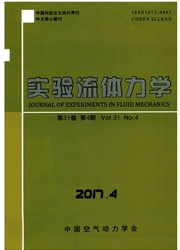

 中文摘要:
中文摘要:
气液反应器和工艺设备中存在大量的气泡,要建立准确预测气泡形成特性的计算模型,就需要详细了解气泡的形成过程,通过CLSVOF数值模拟方法配合实验验证对锐孔气泡形成过程进行了研究。着重讨论了气流量和孔径对气泡形成的影响,并研究了气泡在形成阶段的动力学特性和孔口处气泡的脱离。通过模拟数据和实验数据的分析结果,结合Fr数和Bo数关系图得出:气泡从不发生相互扰动到气泡之间发生合并与破裂的过渡阶段中,气泡锐孔处的进气速度随着孔径的增大而减小。
 英文摘要:
英文摘要:
The process of bubble formation is involved in a lot of gas liquid reactors and process equipment. It is therefore important to understand bubble formation process and to develop computational models for the accurate prediction of the bubble formation characteristics in different bubbling regimes. Numerical simulation of bubble formation cycle on orifice were carried out using the combined level set and volume of-fluid method and the predictions were experimentally validated, Effects of gas flow rate and orifice diameter on the bubbling regimes were discussed. Based on the simulation data and experimental data on the transition of bubble formation regimes, Froude and Bond numbers, the inlet gas velocity at orifice decreases with increase in the orifice diameter is presented.
 同期刊论文项目
同期刊论文项目
 同项目期刊论文
同项目期刊论文
 期刊信息
期刊信息
